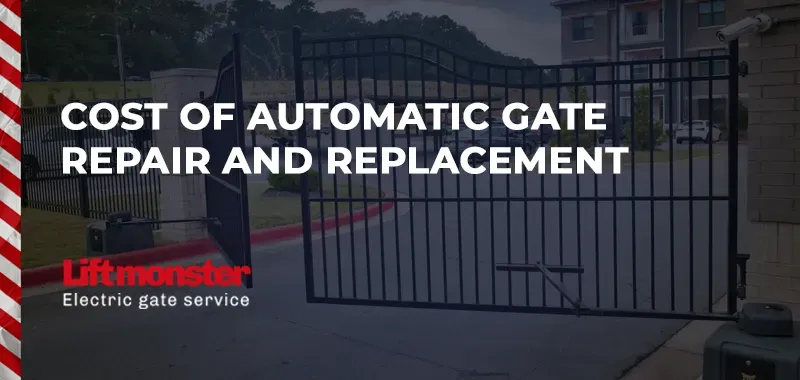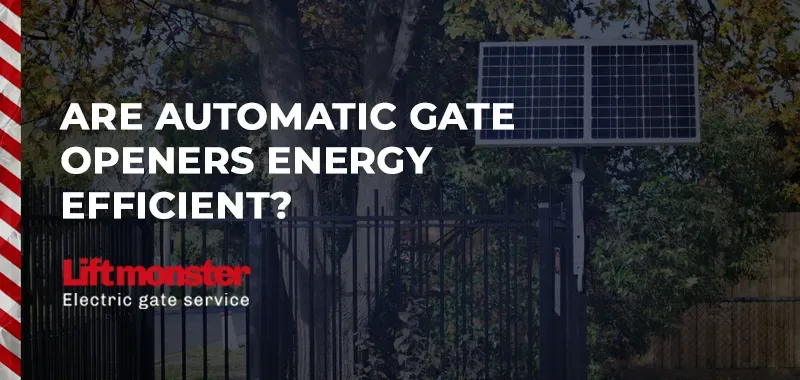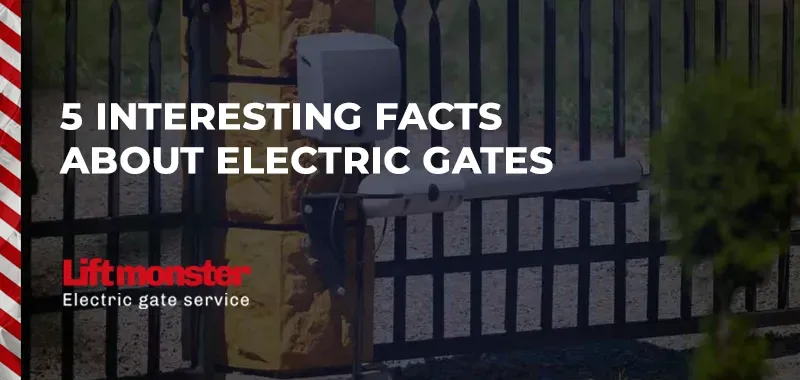The Evolution of Gate Automation: Latest Trends and Technologies
There was a time when the humble gate did little more than mark the boundary of a property. It opened with a creak, closed with a shove, and required someone to physically operate it. Fast forward to today, and gates have become intelligent, automated guardians of our homes and businesses. Gate automation has not only transformed how we enter and exit but also how we interact with and secure our spaces.
The evolution of gate automation is a fascinating journey—one that reflects broader technological shifts, from simple mechanical upgrades to fully integrated smart systems. Whether you’re a homeowner considering an upgrade or a business looking to enhance security and convenience, understanding the latest trends can help you make informed decisions. This article walks you through how gate automation began, where it stands today, and where it’s headed—complete with expert insights, real-world applications, and practical advice.
Benefits Of Hiring A Professional For Automatic Gate Repair
From Manual Labor to Mechanical Assist: The Early Days
Gate automation wasn’t always driven by remote controls or mobile apps. In its early form, automation was more mechanical than digital. Weighted counterbalances, pulley systems, and basic motors allowed heavy gates to move more easily, reducing the effort required to open or close them. These early systems were often found in industrial or commercial settings rather than residential homes.
The primary goal back then was efficiency—especially for large estates or gated communities where constant gate operation became burdensome. Safety was a secondary concern, as systems were still rudimentary and often lacked safety sensors or emergency overrides.
However, even these basic systems laid the foundation for something greater. They demonstrated that gates could be more than static barriers—they could become responsive, interactive parts of everyday life.
The Rise of Remote-Controlled Gates: Convenience Takes Center Stage
The real leap in gate automation came with the advent of remote control technology. Suddenly, users could open gates from inside their cars, homes, or guardhouses with a simple button press. It was a game-changer.
These systems became popular in the 1980s and 1990s, particularly in suburban neighborhoods and urban developments. Electric motors were paired with wireless remotes, allowing swing and sliding gates to open with smooth, quiet motion. Intercoms were also added for gate-to-home communication, providing a new level of interaction and control.
It was during this era that homeowners began seeing gates as more than utility structures. They became symbols of status, security, and sophistication. Still, these systems weren’t without flaws—limited range, frequency interference, and mechanical wear were common challenges. But the concept had taken root, and the road to smart gate systems had been paved.
Modern Gate Automation: Enter the Smart Era
Today, gate automation is defined by intelligence, connectivity, and personalization. We’ve moved well beyond motors and remotes—modern gates now communicate with smartphones, integrate with home security systems, and respond to voice commands.
Smart gate systems can be controlled from virtually anywhere using mobile apps. Whether you're at work, on vacation, or halfway across the world, you can open or close your gate, receive notifications, and monitor live video feeds in real-time. This remote control has not only improved convenience but also redefined what “security” means in a modern context.
Sensors now detect movement, obstruction, and even unusual behavior. License plate recognition cameras can automatically grant access to trusted vehicles. Facial recognition systems are being tested in high-security areas to authorize entry. And thanks to artificial intelligence, some gates can even learn behavioral patterns—automatically locking during off-hours or flagging irregular entries.
It’s no longer just about keeping people out. It’s about knowing who comes in, when, and why.
Trends Driving the Future of Gate Automation
The momentum behind gate automation is only accelerating. Several exciting trends are shaping the next chapter of this evolution.
One such trend is solar-powered automation. With rising environmental awareness and energy costs, solar-powered gates are gaining popularity. They offer self-sufficiency, minimal wiring, and eco-friendliness, especially in remote areas without easy access to power lines.
Another emerging trend is 5G integration. Faster, more reliable networks allow for real-time communication between devices with little to no lag. That means gates can be controlled faster, update security logs instantly, and integrate more smoothly with other smart home components.
Biometric access control is also on the rise. While still in its infancy for residential use, we’re beginning to see fingerprint and facial recognition become feasible, especially for luxury estates or corporate facilities. Combined with data encryption and cloud storage, these systems are making unauthorized access virtually impossible.
And then there’s predictive maintenance technology—AI-driven systems that alert you when a part is likely to fail, helping avoid breakdowns before they happen. Imagine your gate telling you it needs lubrication or motor service—before it jams during a storm.
14 Reasons To Automate Your Gate
Common Challenges and How to Solve Them
Despite all the advancements, gate automation is not without its quirks. Power outages remain a universal concern. A smart gate isn’t very smart if you can’t open it during a blackout. That’s why experts recommend battery backups or solar units to ensure continuous functionality.
Another issue is signal interference. Dense building materials, other wireless devices, or even weather conditions can affect how your gate communicates with your control device. If you're experiencing lag or missed signals, upgrading to a higher-frequency system or installing a signal booster might solve the issue.
Mechanical failure, while less common in newer systems, still happens. Gears wear out, motors overheat, and gates can fall out of alignment. Preventive maintenance is key. Monthly checks, sensor cleanings, and annual professional servicing can save you from costly repairs.
And of course, one of the biggest risks is poor installation. Choosing the wrong type of gate for your terrain, skimping on motor strength, or ignoring local regulations can cause long-term headaches. That’s why it’s crucial to work with experienced gate automation professionals.
Expert Recommendations for a Seamless Automation Experience
If you’re planning to install or upgrade your gate automation system, start with a clear understanding of your needs. Is your priority security, convenience, aesthetics, or all of the above? Your answer will determine whether you need a basic motorized system or a fully integrated smart gate solution.
Experts recommend using high-quality, weather-resistant materials and investing in systems with built-in diagnostics. Make sure your gate has safety sensors that detect pets, children, or objects in the way. Always choose a motor that’s rated for your gate’s weight and usage frequency.
Also, look for systems with firmware updates—like your phone or computer, smart gate systems need regular updates to patch vulnerabilities and enhance performance.
And finally, test your gate regularly. Don't just assume it's working because it opened yesterday. Open it from a remote location, check the live feed, test your emergency override. It’s better to catch a glitch during a routine test than in the middle of a crisis.
How to Future-Proof Your Gate System
Technology moves fast, and today’s latest innovation might become tomorrow’s outdated gadget. So how do you stay ahead of the curve?
The best approach is to choose systems that offer modularity and integration. A gate system that can evolve with your smart home setup—or integrate with new devices via API or cloud connection—is more likely to remain relevant. Also, choose systems from reputable brands with a track record of consistent updates and support.
It’s also wise to keep an eye on upcoming trends. Stay connected to forums, manufacturers, or installers who can alert you to new security features or compatibility options. When the next upgrade rolls around, you’ll be ready for it.
Remember, it’s not just about buying technology. It’s about investing in a solution that grows with your lifestyle.
Conclusion: Opening the Gate to the Future
From heavy iron barriers to sleek, smart, and self-aware entry points, the journey of gate automation is a testament to how far technology has come—and how much further it can go. Today’s automated gates are no longer just physical structures; they’re intelligent, proactive systems that protect, welcome, and simplify.
Whether you value convenience, security, or smart integration, modern gate automation offers something for everyone. The key is understanding what’s available, what’s reliable, and what’s right for you.
So, the next time you watch your gate open at a whisper of your command, remember: you’re not just using a machine—you’re witnessing innovation in motion, right at your doorstep.









